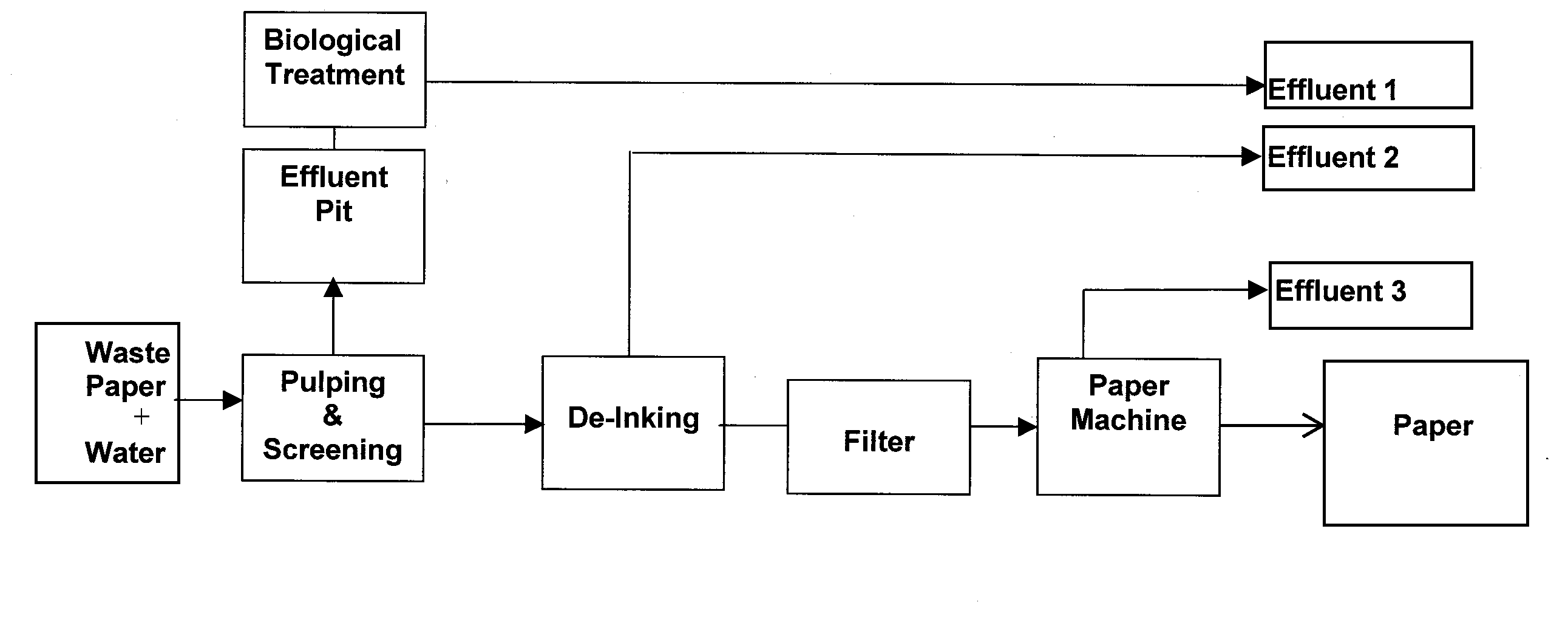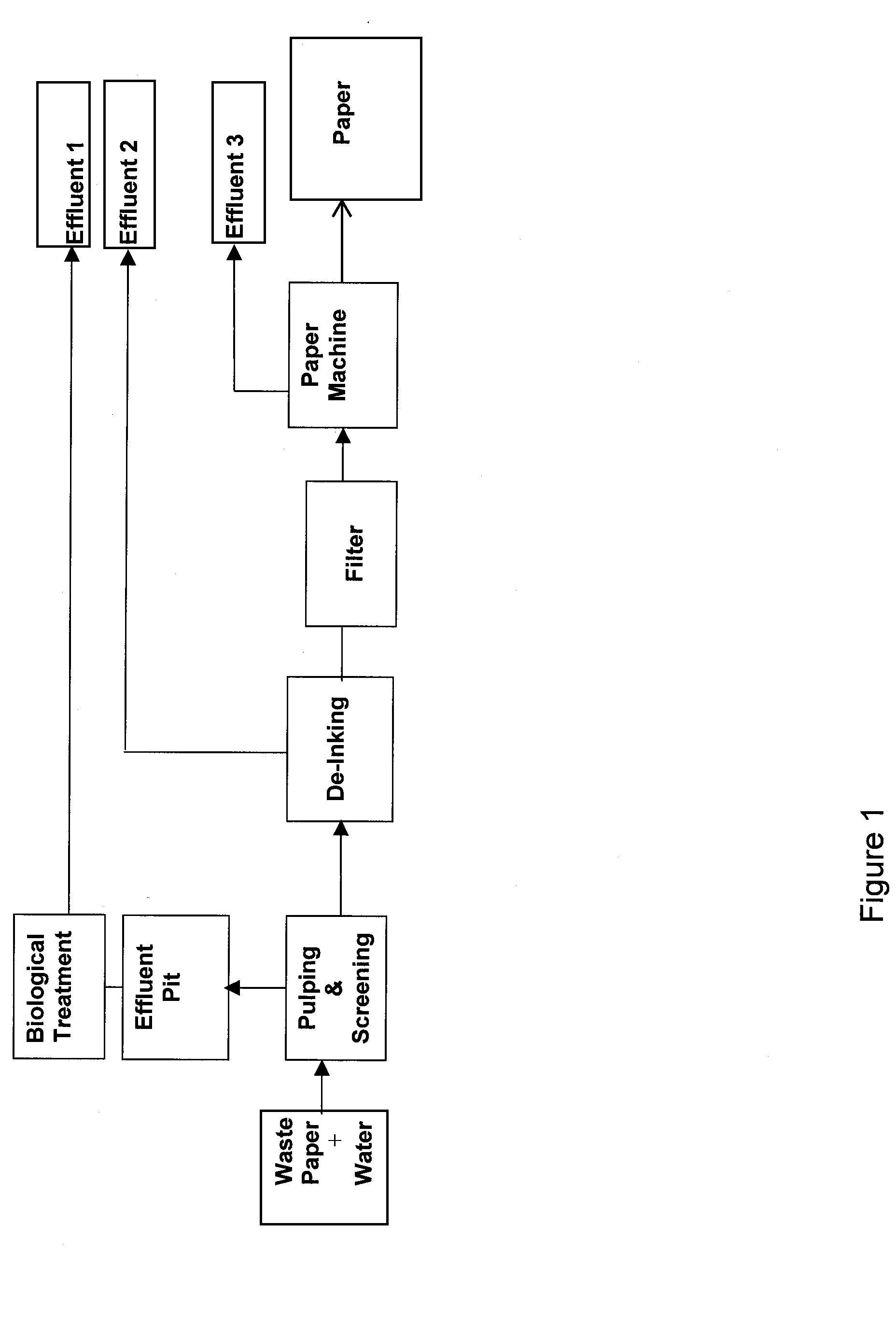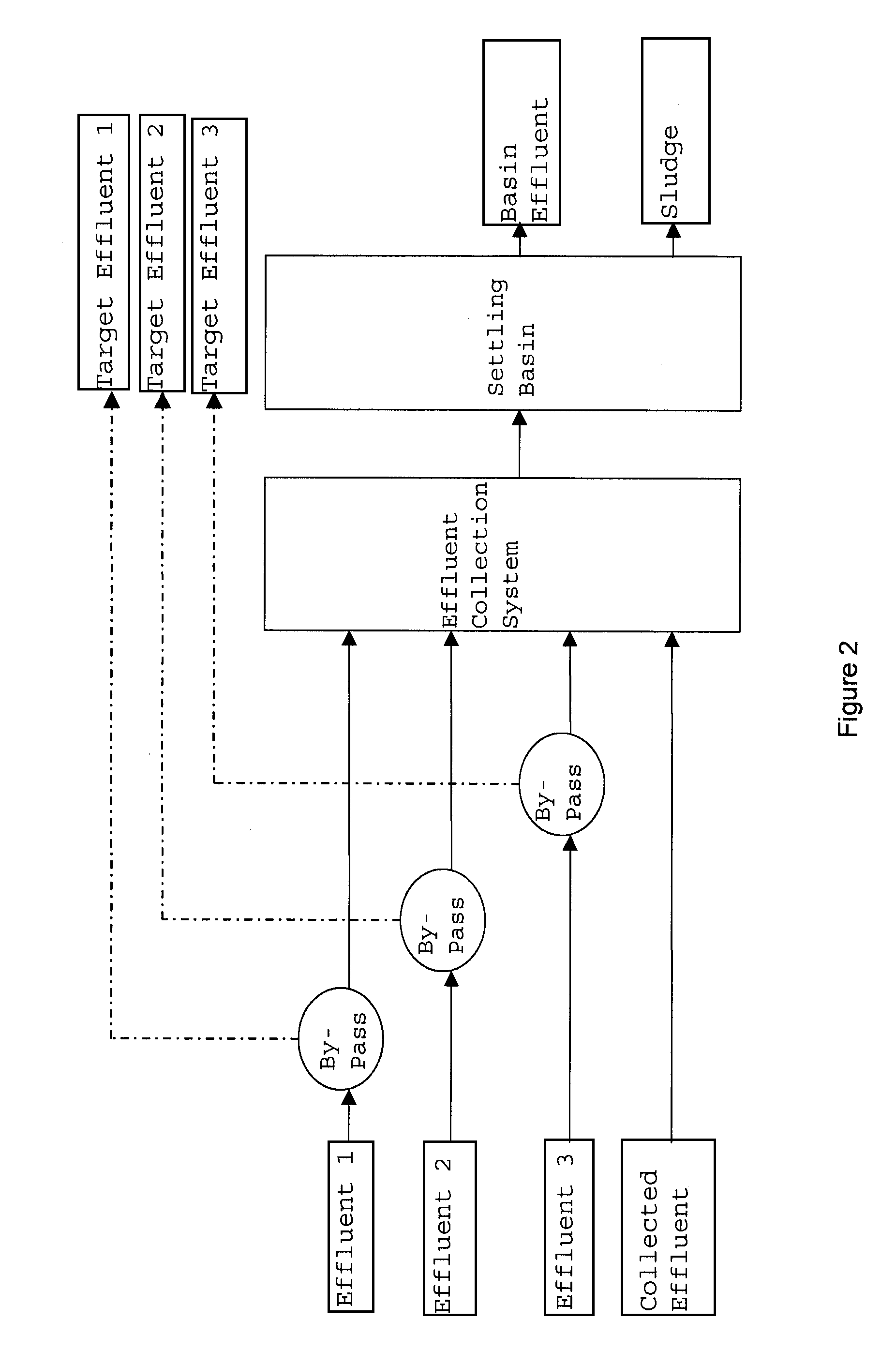System and method for producing ethanol from paper mill sludge
- Summary
- Abstract
- Description
- Claims
- Application Information
AI Technical Summary
Benefits of technology
Problems solved by technology
Method used
Image
Examples
Embodiment Construction
[0029]Disclosed herein is an example of a system and method for producing ethanol from waste paper mill waste sludge and effluent streams. The disclosed system and method combines paper mill sludge with selected high BOD effluent streams to form a slurry that is then processed to form ethanol.
[0030]A typical mid-sized paper making plant processing about 2000 tons per week of waste paper may produce about 1700 tons / week of wastepaper and 300 tons per week of sludge. The same plant may produce about 2.2 million gallons of liquid waste effluent per day. The sludge is mainly composed of cellulose and entrained minerals. The waste effluent contains dissolved organic material, mostly starch. The amount of dissolved organic material is measured by its biological oxygen demand (BOD). BOD is a measure of the amount of oxygen required by aerobic microorganisms to decompose the organic matter in a sample of water, and thus is a good indicator as to the amount of total dissolved organic matter ...
PUM
| Property | Measurement | Unit |
|---|---|---|
| Temperature | aaaaa | aaaaa |
| Fraction | aaaaa | aaaaa |
| Fraction | aaaaa | aaaaa |
Abstract
Description
Claims
Application Information
 Login to View More
Login to View More - Generate Ideas
- Intellectual Property
- Life Sciences
- Materials
- Tech Scout
- Unparalleled Data Quality
- Higher Quality Content
- 60% Fewer Hallucinations
Browse by: Latest US Patents, China's latest patents, Technical Efficacy Thesaurus, Application Domain, Technology Topic, Popular Technical Reports.
© 2025 PatSnap. All rights reserved.Legal|Privacy policy|Modern Slavery Act Transparency Statement|Sitemap|About US| Contact US: help@patsnap.com



